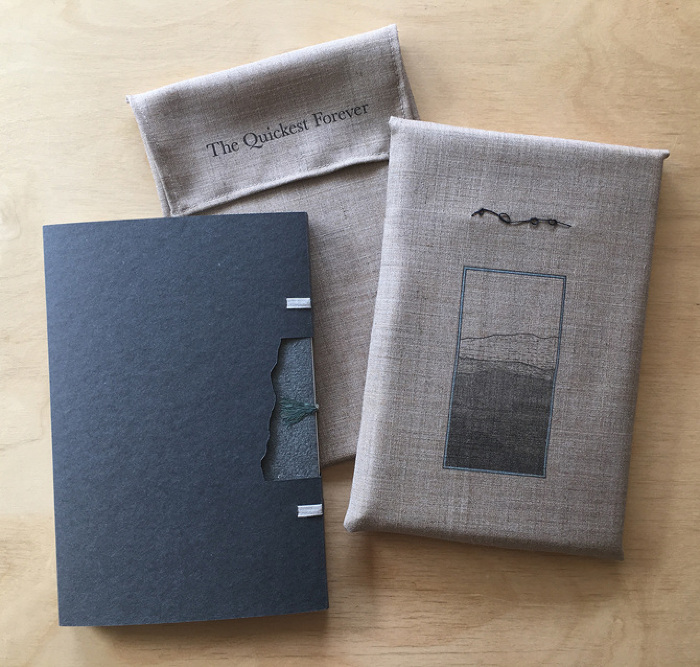Collections
The Quickest Forever / Inge Bruggeman
Coptic bindings
FA.SA6.1814
25.5 x 17 x 2 cm (10 x 6.75 x .75 inches)
2017
Edition 28 of 35. Coptic binding; letterpress printed with dark grey wrappers; signed and dated by the artist. Sewn on linen tapes and jute twine with Twinrocker handmade paper covers. The mid-spine portion of the cover is cut away to show the strata of the book pages. The book is housed in a brown linen pocket bag with the title on front.
"This book was made in an edition of 35 plus 5 artist's proof copies. ...The pages are letterpress printed from handset type and photopolymer plates on both Zerkall paper and handmade paper from Cave Paper."--colophon
"This project was initially inspired by the life and work of Orra White Hitchcock (1796-1863), one of America's earliest women botanical and scientific illustrators and artists. The book became a meditation on the passage of time, both geologic time and individual time. It also draws a connection to the book as a kind of geological artifact in itself. It is an object that represents the passage of time through the turning of pages, and within it our stories and narratives have accumulated over the centuries. The short narrative in the book is printed from hand-set metal type and designed to be read as image captions over a series of pages, and through gaps in time that the material and space of the book provide. The smooth white sheets are interspersed with textured landscapes suggesting a trajectory through the book as well as a journey over space and time. The simple, poetic narrative is broken up with stenciled, text imagery representing the accumulation of verbal deposits and the somewhat fallible nature of words to truly capture our experiences. Black thread also plays a prominent place in the visual narrative of the book. Thread is knotted, braided, and looped to create imagery that might reflect something done to calculate, control, or otherwise capture the passage of time. This imagery was inspired by the quipu, or knotted recording devices, developed during the Inca Empire."--from the artist's website (http://www.ingebruggeman.com/The-Quickest-Forever )

